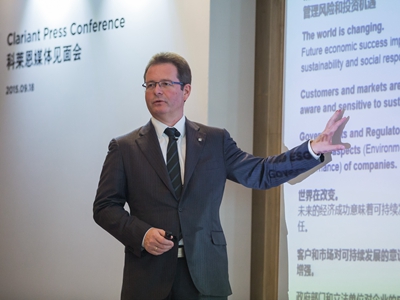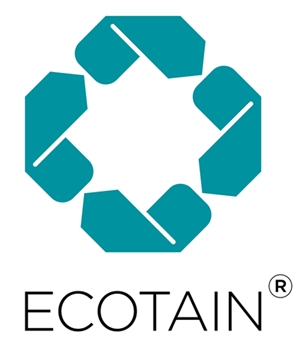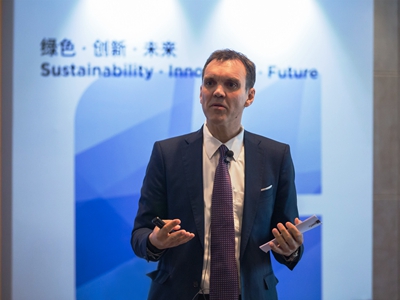Recently, Clariant, the world’s leading manufacturer of specialty chemicals, announced that it has been included in the Dow Jones Sustainability Index for the third consecutive time. Clariant is included in both the European Sustainability Index and the Global Sustainability Index, two of the most prestigious sustainability indices. At the recent media communication meeting held in Shanghai, Gu Peinan, member of Clariant’s global executive committee, and Yan Kaipeng, president of Greater China, further shared Clariant’s practical experience in sustainable development and how to actually practice sustainable development through innovation, emphasizing the corporate How to create value through sustainability and innovation. At the same time, it reiterated Clariant’s strategic goal of becoming an insider in the Chinese market.

(Gu Peinan, Member of Clariant Global Executive Committee)
In the second half of 2014, Clariant listed “adding value through sustainability” as one of the five strategic pillars of the company. For Clariant, sustainable operations mean creating long-term added value and benefiting all stakeholders from an economic, environmental and social perspective. Gu Peinan, member of Clariant’s Global Executive Committee, believes that for Clariant, sustainable development can be reflected in the following two aspects: “First, sustainable development is the driving force of corporate value, helping companies effectively manage risks and capture investment opportunities. The world is changing. , the success of the future economy means the enhancement of social development responsibility. On the one hand, customers and the market have more requirements for sustainable development; Therefore, Clariant is very aware of the status and role of sustainable development in corporate development, and bases Clariant’s value proposition and customer cooperation on the basis of sustainable development. In addition, sustainable development is also The Group’s growth objectives play a key role. For Clariant, sustainable business means creating long-term added value from an economic, environmental and social point of view and benefiting all stakeholders.”
During the period, Gu Peinan introduced in detail Clariant’s sustainability flagship label EcoTain® and the portfolio value program (PVP). EcoTain® is a label developed by Clariant to reflect product sustainability, aiming to ensure product performance and efficiency while protecting human, environmental and ecological health. The label contains a systematic and in-depth screening of 36 criteria, involving three dimensions of sustainability: society, environment and economy, emphasizing Clariant’s contribution to a sustainable future and its added value for customers and society as a whole. Only sustainable products and solutions can be awarded the EcoTain label, and currently about 60 of the more than 1,000 products reviewed within Clariant have been awarded EcoTain®. The selection of EcoTain label products needs to go through strict standards and processes – PVP, which is a collaboration between Clariant and the Collaborating Center for Sustainable Consumption and Production (CSCP) and the Wuppertal Institute (Wuppertal Institute) Cooperation, determined based on the analysis of the general trend and demand of sustainable development, as well as the suggestions and opinions of external stakeholders, is comprehensive, clear and transparent, so that the sustainability of all products can be seen at a glance, and also for further product portfolio optimization and research and development Provides the basis for achieving greater sustainability.

When talking about the relationship between sustainable development and innovation, Gu Peinan said: “Sustainable development is the main driving force of innovation. When we evaluate product portfolios and find that some product portfolios cannot fully meet the requirements of sustainable development, we will It is natural to think of innovation and to find a better product portfolio.”
Clariant’s innovation chain links the two aspects of “advancing technology” and “pulling the market”. Based on the four major business areas of corporate personal care products, natural resources, catalysts, plastics and coatings, its group technology and innovation has created four research and development technology platforms: chemical materials, biotechnology, catalysts and process technology, and through the application, development, and Technical services and market and production-related needs to carry out research and development work to serve the market and customers. Clariant has about 1,000 R&D personnel, and R&D expenses account for 3.5% of sales, nearly 200 million Swiss francs. Clariant has 7,000 project patents, more than 130 scientific research cooperation projects around the world, more than 50 technology application centers and eight global R&D centers around the world.
“Clariant’s innovation is in line with the general trend of global development, focusing on three aspects, resources and energy, globalization and urbanization, and environmental protection. In response to global trends, our business areas also revolve around these trends Divided into shale oil and shale gas, petroleum production and exploitation, nutrition and health, functional packaging, coal-to-gas/chemicals, and bio-based chemicals.” Gu Peinan said, “There is also a littleIt is very important that the product has been evaluated from the very beginning in the whole process of innovation, and we have a proprietary index to see whether it is sustainable. We are not only evaluating existing products, but also evaluating future products, so as to ensure that sustainable products will continue to emerge. “
Sustainability and innovation are increasingly becoming the main theme of Clariant’s participation in China’s economic development and its Greater China strategy. Since entering China 20 years ago, Clariant has been actively participating in the development of China’s entire society and economy, understanding China’s development characteristics at different stages and actively responding to support. Twenty years ago, the entire Chinese society was focusing on high-speed growth, heavy production, and heavy exports. At the beginning, Clariant mainly took advantage of China’s low labor cost for product production, and met the needs of global customers through export.
However, as China’s economy enters a new normal, sustainable development has been raised to an unprecedentedly important position and has become an integral part of Made in China 2025 and the 13th Five-Year Plan. Clariant has a deep understanding of this change, and has formulated a corresponding long-term strategic goal: to become a real “insider in the Chinese market”. This strategy reflects Clariant’s awareness, attention and commitment to the Chinese market, and includes five strategic themes, namely five localizations. Local insight: In addition to in-depth understanding of customers, it is also necessary to have a deep insight into China’s current and future needs; Local competitiveness: Strive to build solutions, production capabilities and organizational structures suitable for China; Local decision-making power: Accelerate local talents Cultivate and drive the decision-making ability of local talents; local innovation ability: increase investment and resource support for local innovation, and improve local innovation; local cooperation ability: strengthen cooperation with local customers and suppliers to better meet the requirements of sustainable development.
Yan Kaipeng, President of Clariant Greater China, said: “For Clariant, our future depends on Asia, especially China. Sustainable development and innovation are two core elements that we are committed to becoming a real insider in the Chinese market .Adhering to the strategy of being a real ‘insider in the Chinese market’, Clariant will actively practice the five localizations, create value through sustainability and innovation, and join hands with the Chinese government and industry to create a highly competitive and innovative and a sustainable future.”

(Clariant Greater China President Yan Kaipeng)
【Related Reading】
Clariant is a leading global specialty chemicals company headquartered in Muttenz near Basel. Continuing business sales in the 2014 financial year were 6.116 billion Swiss francs, with an EBITDA rate of 14.2%, and a corresponding profit of 8.67 trillion Swiss francs. It has 110 companies and 17,000 employees in 60 countries around the world.
Gu PeinanMember of the Executive Committee of Clariant Ltd
Gu Peinan in 2009 Appointed as a member of the Executive Committee of Clariant GmbH in October, responsible for the Specialty Industrial and Consumer Goods, Catalysts, Petroleum and Mining business units, Group Sustainability and Management, Group Technology and Innovation, and the start-up of the Biofuels and Derivatives business, Business excellence and innovation excellence. In addition, he is also responsible for Clariant North America, Latin America, Greater China, India and Southeast Asia.
Yan Kaipeng President of Clariant Greater China and Korea
Yan Kaipeng was appointed as President of Clariant Greater China and Korea on September 1, 2013. Yan Kaipeng has worked on three continents and gained rich management experience in different cultural backgrounds. Before becoming the president of Clariant Greater China and Korea, he served as CEO of Asia Pacific of Knauf (an international leading building materials company headquartered in Germany). In addition, Yan Kaipeng has worked in other leading chemical companies such as BASF and Ciba Specialty Chemicals for more than 20 years, during which he held various senior sales and business management positions. Yan Kaipeng has accumulated a lot of international work experience in Asia and Europe, and has made great achievements in the chemical industry.



 微信扫一扫打赏
微信扫一扫打赏
